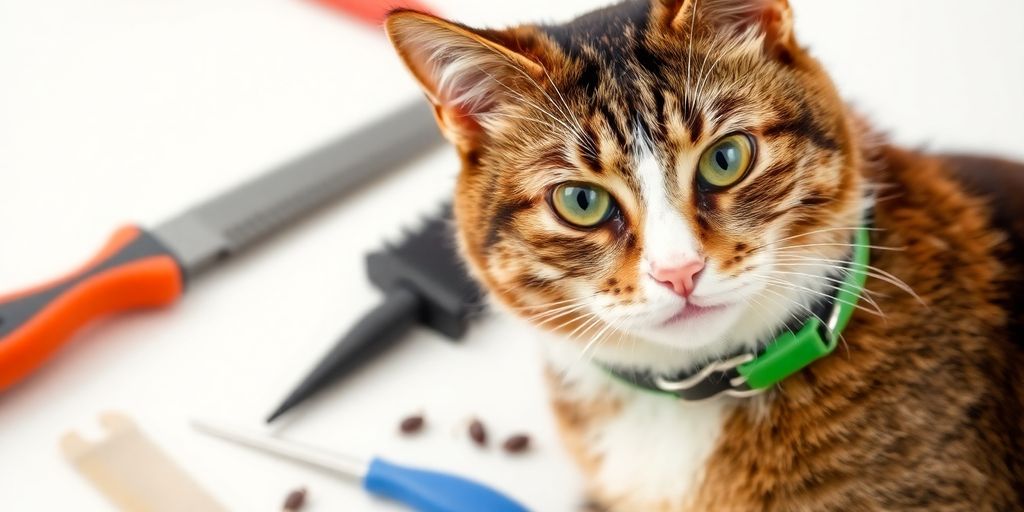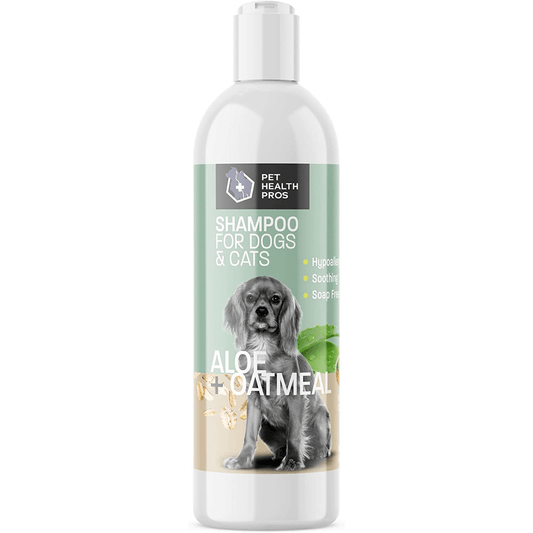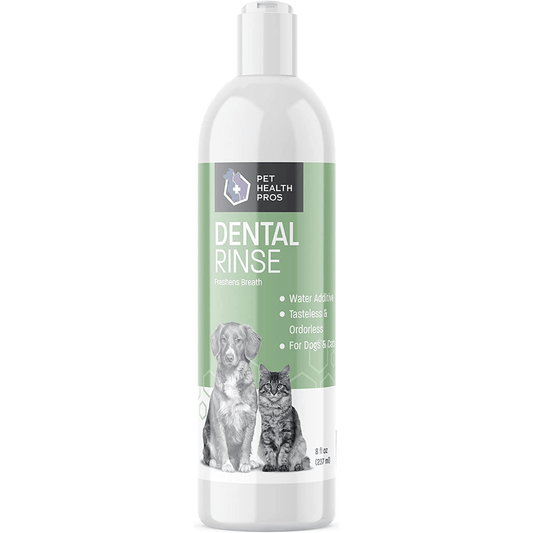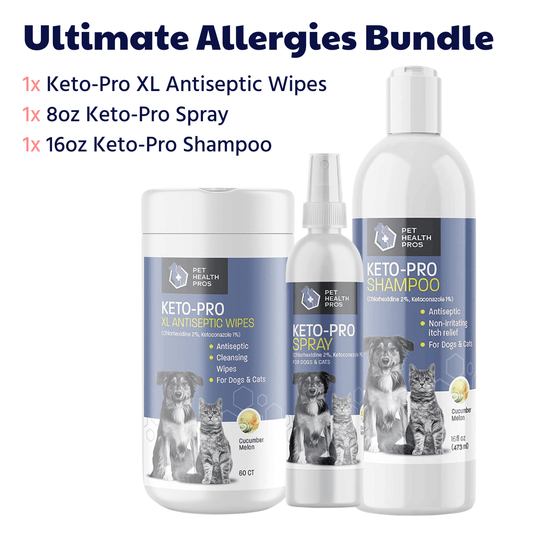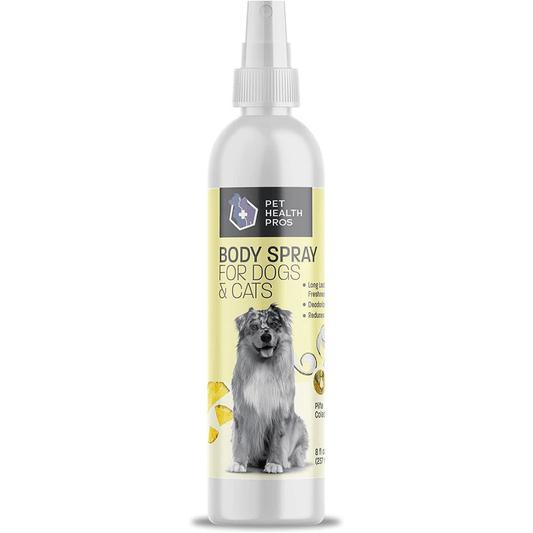Fleas can be a real nuisance for cats and their owners. These tiny pests not only cause discomfort for your feline friend, but they can also invade your home, making it a challenging situation to tackle. In this guide, we’ll explore effective ways to treat fleas in cats, covering everything from understanding their life cycle to preventative measures and treatment options. Whether you're dealing with a current infestation or looking to prevent one, we've got you covered.
Key Takeaways
- Understanding the flea life cycle helps in effectively treating fleas in cats.
- Regular grooming and maintaining a clean environment can prevent flea infestations.
- Topical treatments and oral medications are effective methods to treat fleas in cats.
- Environmental control is crucial to eliminate fleas from your home and yard.
- Home remedies can be useful, but consult a vet for severe infestations or flea allergies.
Understanding Flea Life Cycle
Okay, so you're dealing with fleas. It's not fun, but understanding how these little guys operate is half the battle. They aren't just hopping around; they have a whole life cycle, and knowing it can really help you target flea treatments effectively.
The Stages of Flea Development
Fleas go through four main stages: egg, larva, pupa, and adult. It's like a tiny, itchy butterfly transformation, but way less pretty. The adult fleas, those are the ones you see jumping on your cat, lay eggs. These eggs aren't sticky, so they fall off your pet and land all over your house – carpets, furniture, bedding, you name it. Then, the eggs hatch into larvae, which are like tiny worms that feed on organic debris, including flea dirt (flea poop, basically). After that, the larvae spin a cocoon and become pupae. This pupal stage can last for weeks or even months, waiting for the right conditions (like warmth and vibrations) to emerge as adults. This is why you might think you've gotten rid of fleas, only for them to reappear later.
- Egg: Tiny, white, non-sticky.
- Larva: Worm-like, feeds on organic matter.
- Pupa: Develops inside a cocoon, can remain dormant.
- Adult: Blood-sucking, reproductive stage.
How Fleas Infest Your Home
Fleas are masters of infiltration. They usually hitch a ride on your pet from outside, but they can also come in on your clothes or shoes. Once inside, they quickly reproduce, turning your home into a flea paradise. The key is understanding that most of the flea population isn't on your pet; it's in your environment. This means you have to treat your home as well as your cat to get rid of them for good.
Think of it like this: for every flea you see on your cat, there are probably dozens more in the form of eggs, larvae, and pupae hiding in your carpets and furniture. It's a multi-front war, and you need to attack on all fronts to win.
Signs of Flea Infestation
Knowing what to look for can help you catch a flea problem early. Obvious signs include seeing fleas jumping on your cat or in your home. But there are other clues too. Excessive scratching or grooming is a big one. You might also notice flea dirt, which looks like tiny black specks, in your cat's fur or on their bedding. Some cats develop flea allergy dermatitis, which causes intense itching, hair loss, and skin inflammation. If you see any of these signs, it's time to take action and start treating your cat for fleas.
Here's a quick checklist:
- Excessive scratching, biting, or licking.
- Visible fleas in fur or on skin.
- Flea dirt (small black specks) in fur or bedding.
- Hair loss, especially near the tail.
- Skin irritation or hot spots.
Preventive Measures for Fleas
Alright, so you've got a cat, and you really don't want fleas. I get it. Prevention is way easier than dealing with an infestation, trust me. Here's what I've learned about keeping those little buggers away.
Regular Grooming and Bathing
Okay, so grooming. It's not just about making your cat look pretty (though, let's be honest, that's a bonus). Regular grooming helps you spot fleas early, before they turn into a full-blown party on your cat.
- Brush your cat a few times a week. This helps remove loose fur and any flea dirt (that's flea poop, by the way...gross, I know).
- Use a flea comb. These combs have really fine teeth that can actually catch fleas. If you see any, dunk the comb in soapy water to kill them.
- Bathing can help, but don't overdo it. Too many baths can dry out your cat's skin. Once a month is usually enough, unless your vet says otherwise.
I tried to skip the grooming routine once, thinking, "Eh, it'll be fine." Big mistake. A week later, I was battling a flea invasion. Now, I stick to the schedule religiously. It's just not worth the hassle.
Using Flea Collars
Flea collars... they're a mixed bag, honestly. Some people swear by them, others not so much. The thing is, they're not all created equal.
- Talk to your vet about which flea collar is best. Some collars use chemicals that can be harmful to cats, so you want to make sure you're getting a safe and effective one.
- Make sure the collar fits properly. It should be snug enough that your cat can't get it off, but not so tight that it's uncomfortable.
- Keep an eye on your cat for any signs of irritation around the collar. If you see redness or hair loss, take the collar off and talk to your vet.
Maintaining a Clean Environment
This is a big one, people. You can treat your cat all you want, but if your house is a flea haven, you're fighting a losing battle. Fleas love carpets, upholstery, and pet bedding, so you need to keep those areas clean.
- Vacuum regularly. I'm talking at least once a week, maybe more if you're dealing with an active infestation. Don't forget to vacuum under furniture and along baseboards.
- Wash your cat's bedding frequently. Hot water is key to killing flea eggs and larvae.
- Consider using a flea spray or powder in your home. Just make sure it's safe for pets and follow the instructions carefully.
Topical Treatments for Fleas
So, your cat's got fleas, and you're looking for something to put directly on them? Makes sense. Topical treatments are a pretty common way to deal with these little pests. Let's look at some options.
Spot-On Treatments
Spot-on treatments are probably what most people think of first. These are usually applied to the back of the cat's neck, where they can't easily lick it off. They contain insecticides that spread through the cat's skin and coat, killing fleas.
- They're easy to apply.
- They usually last for about a month.
- Make sure you get the right dosage for your cat's weight.
It's super important to read the label and follow the instructions. Don't use dog spot-on treatments on cats, as they can be toxic. Seriously, double-check everything before you put it on your cat.
Flea Shampoos
Flea shampoos are another option, and they can give your cat some quick relief. The thing is, they only kill the fleas that are on your cat during the bath. They don't really offer any lasting protection.
- Good for a quick knockdown of fleas.
- Can be drying to the skin, so don't overdo it.
- Follow up with another treatment for long-term control.
Natural Topical Solutions
If you're trying to avoid harsh chemicals, there are some natural topical solutions you could try. Keep in mind that these might not be as effective as the traditional treatments, and it's always a good idea to talk to your vet before trying anything new.
- Diatomaceous earth (food grade) can be applied to the coat, but be careful not to let your cat inhale it.
- Some essential oils, like lavender or cedarwood, are said to repel fleas, but use them very diluted and watch for any adverse reactions.
- Lemon juice diluted with water can be used as a rinse, but avoid getting it in your cat's eyes.
Oral Medications for Fleas
So, you're thinking about oral flea meds for your cat? It's a route many owners consider, and for good reason. They can be super effective, but it's good to know what you're getting into.
Types of Oral Flea Medications
There are a few different kinds of oral flea treatments out there. Some of the common ones include:
- Flea pills: These are usually given monthly and work by interfering with the flea's nervous system, which leads to their death.
- Chewable tablets: These are often flavored to make them more appealing to cats, which can make giving them the medication easier.
- Liquid solutions: These can be administered directly into your cat's mouth or mixed with their food.
How Oral Treatments Work
Oral flea medications work from the inside out. Once your cat ingests the medication, it enters their bloodstream. When fleas bite your cat and ingest the treated blood, the medication affects the fleas, causing them to die. The cool thing about oral meds is that they can kill fleas quickly, sometimes within hours.
Consulting Your Veterinarian
Before you decide to give your cat any oral flea medication, it's really important to talk to your vet. They can help you figure out which medication is best for your cat based on their weight, age, and overall health. Plus, they can tell you about any potential side effects or interactions with other medications your cat might be taking.
It's also worth noting that not all flea medications are safe for all cats. Some medications can have adverse reactions in certain breeds or cats with underlying health conditions. Your vet will be able to assess your cat's individual needs and recommend a safe and effective treatment plan.
Environmental Control for Fleas
Fleas aren't just on your cat; they're everywhere your cat goes. Getting rid of them requires a strategy that includes treating your home and yard.
Vacuuming and Cleaning
Vacuuming is your first line of defense. It removes fleas, eggs, and larvae from carpets, rugs, upholstery, and even hardwood floors. Don't forget to vacuum along baseboards and under furniture. After vacuuming, immediately dispose of the vacuum bag or empty the canister outside in a sealed bag to prevent re-infestation.
- Vacuum frequently, ideally every day or every other day, during an infestation.
- Wash your pet's bedding in hot, soapy water at least once a week.
- Mop hard floors with a suitable cleaner to remove any remaining flea dirt or eggs.
Using Flea Sprays and Powders
Flea sprays and powders can be effective for treating areas that are difficult to vacuum, such as cracks and crevices. Look for products that contain insect growth regulators (IGRs), which prevent flea larvae from developing into adults. Always follow the product instructions carefully and keep pets and children away from treated areas until they are completely dry.
When using flea sprays or powders, focus on areas where your pet spends the most time. This includes their bedding, favorite resting spots, and any areas where you've noticed flea activity. Be sure to ventilate the area well after application.
Treating Your Home and Yard
For severe infestations, you may need to treat your entire home and yard. Indoor flea bombs or foggers can be used, but they require careful preparation and should be used as a last resort. Outdoor treatments can help control flea populations in your yard, especially in shady areas where fleas thrive. Consider using a hose-end sprayer with an insecticide labeled for flea control.
- Remove debris, such as leaves and grass clippings, from your yard to eliminate flea breeding grounds.
- Keep your lawn mowed to reduce humidity and sunlight, making it less attractive to fleas.
- Consider using nematodes, beneficial worms that eat flea larvae, as a natural way to control flea populations in your yard.
Home Remedies for Fleas
So, you're dealing with fleas, huh? It's a pain, I know. Before you rush to the store for chemicals, let's explore some home remedies. Sometimes, simple stuff can really make a difference. Just remember, what works for one cat might not work for another, and it's always a good idea to chat with your vet, especially if your cat has sensitive skin or other health issues.
Essential Oils for Flea Control
Okay, so essential oils get a lot of buzz, but you gotta be super careful with cats. Many essential oils are toxic to them. We're talking serious liver damage here, so don't just go slathering stuff on your kitty. If you're gonna try this, do your research and dilute, dilute, dilute! Some people have had success with lavender or cedarwood, but honestly, I'm always a bit nervous about this one.
Diatomaceous Earth
Now, this is something I've actually used and had decent results with. Diatomaceous earth (DE) is basically fossilized algae, and it's like tiny shards of glass to fleas. It scratches their exoskeletons, causing them to dehydrate and die. You can sprinkle it around your house, especially in carpets and pet bedding. Just make sure you're using food-grade DE, not the stuff for pool filters. And be careful not to let your cat breathe it in – it can irritate their lungs. I usually put it down when they're not around and then vacuum it up later.
Homemade Flea Traps
Alright, flea traps are pretty simple. You basically need a dish, some water, and a light source. The light attracts the fleas, and they jump into the water and drown. It's not gonna solve a major infestation, but it can help you monitor how bad things are and catch a few of the little buggers. Here's how I usually set mine up:
- Fill a shallow dish with water and a bit of dish soap (the soap breaks the surface tension, so the fleas can't float).
- Place the dish on the floor near where your cat hangs out.
- Position a lamp or nightlight close to the dish (but not so close that it's a fire hazard).
I've found that these traps work best in dark rooms. Check the trap every morning and empty it as needed. It's kinda gross, but also satisfying to see how many fleas you've caught. Remember, this is just one small part of a bigger flea-fighting strategy.
When to Seek Professional Help
Sometimes, despite our best efforts, flea infestations can become overwhelming. It's important to know when home treatments aren't enough and it's time to get a vet involved. I know, it's a bummer, but sometimes you just need the big guns!
Identifying Severe Infestations
How do you know if you're dealing with a severe flea problem? Well, it's more than just seeing a few fleas now and then. Here are some signs that things have gone beyond what you can handle at home:
- Constant scratching and biting: If your cat is constantly tormented by fleas, despite your efforts, it's a sign the infestation is too heavy.
- Visible flea dirt everywhere: If you're finding flea dirt (that's flea poop, by the way) all over your cat's bedding, furniture, and even on you, it's a bad sign.
- Anemia: In severe cases, especially in kittens, fleas can cause anemia due to blood loss. Look for pale gums and weakness.
Veterinary Treatments
When you visit the vet, they have access to treatments that are stronger and more effective than what you can buy over the counter. These might include:
- Prescription-strength topical medications: These often contain ingredients that kill fleas faster and more completely.
- Oral medications: Some oral meds work quickly to kill adult fleas and can provide fast relief for your cat.
- Injections: In some cases, vets might use injections to control fleas, especially if your cat can't take oral medications.
It's really important to follow your vet's instructions carefully when using any flea treatment. Don't try to mix and match treatments without talking to them first, as this could be harmful to your cat.
Understanding Flea Allergies in Cats
Some cats are allergic to flea saliva, which can cause a condition called flea allergy dermatitis (FAD). Even a single flea bite can cause intense itching and skin irritation in allergic cats. Signs of FAD include:
- Intense scratching, especially around the tail base
- Hair loss
- Skin lesions and scabs
- Secondary skin infections
If you suspect your cat has FAD, it's important to see a vet. They can diagnose the allergy and recommend treatments to relieve the itching and heal the skin. This might include antihistamines, corticosteroids, or special shampoos. Managing flea allergies can be tricky, but with the right approach, you can keep your cat comfortable and flea-free.
If you're feeling overwhelmed or stuck, it might be time to talk to someone who can help. Professional support can make a big difference in your life. Don't hesitate to reach out for guidance. For more information on when to seek help, visit our website today!
Wrapping Up: Keeping Your Cat Flea-Free
Dealing with fleas on your cat can be a real hassle, but it’s definitely manageable. By using a mix of treatments like topical solutions, oral medications, and regular grooming, you can keep those pesky fleas at bay. Don’t forget to treat your home too, since fleas love to hide in carpets and furniture. Always consult your vet before starting any new treatment to make sure it’s safe for your furry friend. With a little effort, you can ensure your cat stays happy and flea-free!
Frequently Asked Questions
What are the signs that my cat has fleas?
You might see your cat scratching a lot, biting its skin, or losing fur. You can also find tiny black specks on their fur, which are flea droppings.
How can I prevent fleas on my cat?
Regular grooming and bathing help, along with using flea collars or topical treatments. Keeping your home clean is also important.
Are there safe topical treatments for fleas?
Yes, there are many spot-on treatments and flea shampoos that are safe for cats. Always check with your vet before using any product.
What oral medications are effective against fleas?
There are several oral medications available that kill fleas. Your veterinarian can recommend the best option for your cat.
How can I treat my home for fleas?
Vacuum regularly, wash your cat's bedding, and consider using flea sprays or powders in your home and yard.
When should I take my cat to the vet for fleas?
If your cat has a severe infestation or shows signs of flea allergies, it's best to consult a veterinarian for treatment options.

